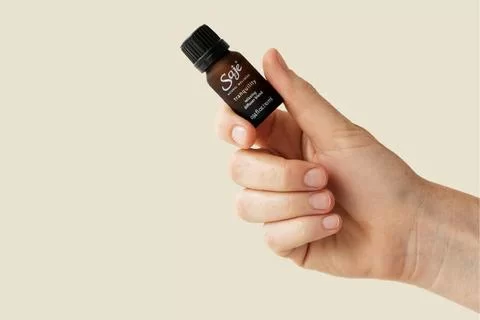- Benefits-of-Essential-Oils-for-Meditation-Blends
- Top-Essential-Oils-Used-in-Meditation-Blends
- How-to-Create-Effective-Meditation-Essential-Oil-Blends
- Real-Life-Examples-of-Essential-Oil-Usage-in-Meditation
- Where-to-Find-Quality-Essential-Oils-for-Meditation
1. Benefits of Essential Oils for Meditation Blends
Meditation is a practice that aims to center the mind, reduce stress, and increase mindfulness. Incorporating essential oils for meditation blends can significantly deepen this experience. Essential oils, derived from natural plants, possess aromatic compounds that influence brain chemistry and mood. When inhaled, these oils can promote relaxation, enhance focus, and even stimulate spiritual awareness.
For instance, certain oils are known to reduce cortisol levels—the hormone linked to stress—helping meditators achieve a calmer state more quickly. Moreover, essential oils create an inviting atmosphere that signals the brain it’s time to unwind and concentrate, which is crucial for effective meditation.
By integrating essential oils for meditation blends into your routine, you not only enrich the sensory experience but also cultivate a mental environment conducive to mindfulness. This dual effect of scent and meditation creates a powerful synergy that can transform your practice from routine to restorative.
1.1 Emotional and Psychological Impact
Scents have a direct pathway to the limbic system, the brain’s emotional center. Essential oils such as lavender or frankincense can reduce anxiety, while oils like peppermint can invigorate and sharpen attention. These emotional and psychological benefits underline why essential oils are becoming staples in meditation rituals worldwide.
1.2 Physical Relaxation and Mental Clarity
Beyond emotional balance, essential oils can support physical relaxation by easing muscle tension and improving breathing patterns. Oils like chamomile or sandalwood help slow the heart rate, facilitating a deeper meditative state where mental clarity flourishes.
2. Top Essential Oils Used in Meditation Blends
Choosing the right essential oils for meditation blends depends on your personal goals and preferences. Below are some of the most effective and popular oils commonly used:
2.1 Lavender – The Ultimate Calmer
Lavender essential oil is celebrated for its ability to soothe the nervous system and ease restless thoughts. It’s ideal for beginners who struggle with anxiety during meditation.
2.2 Frankincense – The Spiritual Enhancer
Known since ancient times for its spiritual associations, frankincense encourages a deep sense of grounding and connection. Its resinous aroma helps quiet the mind and deepen inner awareness.
2.3 Sandalwood – The Mind’s Anchor
Sandalwood’s warm, woody scent stabilizes emotions and promotes mental clarity. It is particularly favored for longer meditation sessions that require sustained focus.
2.4 Peppermint – The Focus Booster
Peppermint invigorates the senses and enhances alertness, which can be useful during guided meditation or mindfulness practices that involve visualization.
2.5 Chamomile – The Gentle Relaxer
Chamomile is perfect for winding down and releasing tension. Its mild floral scent creates a nurturing space for meditation, especially after a stressful day.
3. How to Create Effective Meditation Essential Oil Blends
Crafting your own essential oils for meditation blends is both an art and a science. It’s important to balance the aromas so they complement one another and suit your meditation style.
3.1 Understanding Aromatic Families
Essential oils fall into categories such as floral, woody, citrus, and herbal. Blending across families can create complex scents that hold attention without overwhelming. For example, mixing lavender (floral) with sandalwood (woody) produces a calming yet grounding aroma.
3.2 Ratio and Dilution
Generally, a good starting blend might use 3-5 drops of essential oil per 10 ml of carrier oil or diffuser water. Avoid overpowering scents, as they can distract rather than aid meditation.
3.3 Personal Experimentation
The most effective blends are those tailored to your needs. Keep a journal of different combinations and note how each blend affects your meditation depth and mood. Over time, you’ll discover your signature meditation scent.
4. Real-Life Examples of Essential Oil Usage in Meditation
Consider the story of Emma, a yoga instructor who struggled with maintaining calm during her morning meditation. After introducing a blend of frankincense and lavender to her practice, she noticed a remarkable shift—her mind settled faster, and her sessions felt more profound. Emma shares how this blend became a ritual symbolizing her transition from daily chaos to mindful peace.
Similarly, a mindfulness coach in New York utilizes peppermint and chamomile blends to guide clients through visualization exercises. These scents help participants stay alert yet relaxed, facilitating deeper mental engagement.
Such cases illustrate that essential oils for meditation blends do more than scent a room—they anchor the mind, evoke emotions, and personalize the meditation experience, making it richer and more effective.
5. Where to Find Quality Essential Oils for Meditation
When selecting essential oils for meditation blends, purity and quality are paramount. Synthetic or diluted oils can undermine the therapeutic effects and cause unwanted reactions.
For those seeking premium essential oils, Scent Snob offers a carefully curated selection tailored to meditation and mindfulness practices. Their products are tested for purity and sustainably sourced, ensuring that every drop enhances your meditative journey with integrity.
Choosing the right supplier is just as crucial as selecting the right oils. With Scent Snob’s expert recommendations, you can confidently explore and expand your meditation aromatherapy toolkit.


0 comments